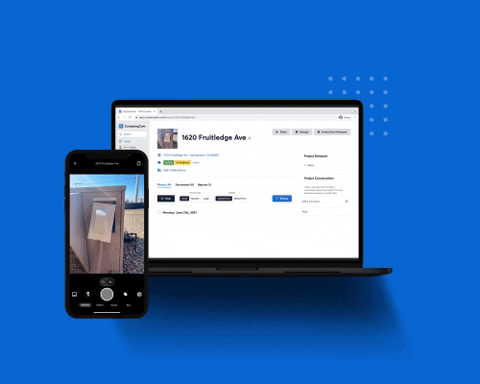You're here because you want to master the art of scraping your screen. Maybe you've dabbled a bit, peeking behind user interfaces or trying your hand at data extraction. We'll dive into how this tech is shaking things up in finance by helping budget apps give us those eye-opening financial insights and easy payment options.
We'll sort through the toolbox—exploring which scraping tools can make your life easier when it comes to pulling out that precious display information.
What is Screen Scraping?
Let's say you work in a role where you need to collect a lot of data. This can take hours of your work schedule to do accurately. It can also be extremely tedious. So what if I told you there was a way to get all that information without straining your eyes in front of your computer all day?
Enter the magic of screen scraping. It's like waving Harry Potter's magic wand to gather up everything you need in a matter of seconds.
Web scraping usually refers to extracting, parsing and outputting data from HTML code. Webpages typically comprise a combination of HTML, CSS and JavaScript code. A browser makes these elements human-readable. By right-clicking and inspecting a page, a user can see which on-page elements in the browser correspond to which lines of HTML code. This can be helpful in knowing what to scrape.
-Ben Lutkevich, Tech Website Editor
Why Screen Scraping?
Screen scraping has emerged as a critical tool for data extraction from graphical user interfaces, especially in sectors where quick access to up-to-date information is key. By capturing screen display data automatically, this technology offers businesses the agility they need to stay ahead.
Choosing the right tools can make or break your screen scraping work. There's many web scraping tools designed specifically for different integration scenarios—some prioritize ease-of-use while others focus on handling more complex tasks like dealing with unstructured text data or dynamic content within web browsers.
What Can You Use Screen Scraping For?
Initially screen scraping referred to the practice of reading text data from a computer display terminal's screen. Today, it often involves automated software processes that extract data from websites and web applications. Here's some common uses for screen scraping:
Data Aggregation
Screen scraping is widely used to collect data from various websites and aggregate it into a single, comprehensive database or application. This is common in sectors like travel (for comparing flight prices), real estate (for aggregating property listings), and finance (for aggregating stock prices or insurance quotes).
Over 37% of businesses use web scraping for lead generation and around 46% of web scrapers extract data from product pages.
If you think about it, the use cases are endless!
Outreach
So you need to send cold emails, and making up your lead gen list takes the most time? Using a tool like Magical, you can quickly snap up valuable details about someone's name, company, and role. Then you can port it over to a spreadsheet so you can communicate with all your intended prospects.
See it in action here:

Competitive Analysis
Businesses use screen scraping to monitor competitors’ websites, gathering data on pricing, product offerings, and market strategies. This information supports competitive analysis and strategic planning.Around 38% of web scrapers use it for competitive pricing. E-commerce (22%) and real estate (17%) are the top industries using web scraping, but there are plenty of others where you could use the data to get a real feel for the industry.
Web Indexing
Search engines use sophisticated forms of screen scraping to index the content of web pages across the internet. This process enables the search engines to return relevant web pages in response to user queries.
Price Monitoring
E-commerce platforms and retailers use screen scraping to monitor prices on competitor websites. This information can be used to adjust pricing strategies dynamically to stay competitive in the market.
Market Research
Screen scraping facilitates market research by collecting data on consumer behavior, trends, and preferences from various online sources. This data can be analyzed to identify market opportunities and inform product development.
Content Migration
When businesses need to migrate content from one website to another, screen scraping can automate the extraction of content (text, images, links) from the old site, speeding up the migration process.
Financial Analysis
Analysts use screen scraping to collect financial data from multiple sources, such as stock exchanges, bank websites, and financial news sites, for analysis and decision-making purposes.
SEO Monitoring
SEO professionals use screen scraping to track website rankings, search engine results page (SERP) positions, and to analyze the SEO strategies of competitors.
Social Media Analysis
Screen scraping tools are used to gather data from social media platforms for sentiment analysis, trend spotting, and monitoring public reaction to events, products, or services.
Legal and Security Aspects of Screen Scraping
Screen scraping is a powerful tool, but it walks a fine line in the legal landscape. Especially under PSD2 regulations, where banks are urged to transition to more secure APIs, understanding the legal nuances becomes crucial. These rules serve as a guardrail for companies seeking to use screen scraping technology responsibly.
Staying Compliant with Regulations
To scrape screens legally, you have to navigate through complex legislation like PSD2. This framework lays out specific security measures that must be adhered to when accessing financial data—a process integral for budgeting apps that rely on screen scrapers work to collect user information from banking interfaces.
The Financial Conduct Authority (FCA) provides guidance on transitioning away from legacy systems towards APIs which offer enhanced security features for such sensitive operations. Their policy document outlines these steps clearly and serves as an essential resource for any entity involved in this kind of data extraction.
Safeguarding Data during Extraction
Beyond compliance, securing scraped data should be top priority because unauthorized access or breaches can have severe repercussions. Companies need robust protocols ensuring their screen scraping techniques do not compromise customer login details or financial records—keeping both the company's and customers' interests safe.
This entails implementing encryption methods throughout the scraping process along with rigorous authentication procedures before any visual data can be captured from screens displaying sensitive information.
The Difference Between Screen Scraping and Web Scraping
At the heart of data collection, screen scraping and web scraping serve as two distinct techniques that empower businesses with valuable insights. While they share a common goal, their paths diverge in the way they interact with information sources.
Screen Scraping
Screen scraping is akin to taking a digital snapshot of what's on display—a GUI or graphical user interface—and then extracting text data from it. It captures visual data originally designed for human interaction, not machine reading. This technique comes in handy when dealing with legacy systems where access to underlying source code or APIs isn't available.

From UIPath Forum
In practice, financial services have adopted this method extensively. Budget apps leverage screen scrapers to collect product prices and customer banking details securely—transformations spurred by open banking frameworks like those detailed by the Open Banking Implementation Entity (OBIE). They help users manage finances better by pulling transactional data right off their bank’s user interface without needing direct access to more structured databases.
Web Scraping
Moving away from GUIs, web scraping focuses on HTML content extraction directly through a web browser. Here we're talking about well-structured information ripe for retrieval; think price monitoring or competitor analysis fueled by specific data culled from websites' public-facing elements using various scraping tools.
This approach has transformed how companies secure actionable intelligence—from capturing market trends down to refining user experience designs based on collected web data via sophisticated robotic process automation (RPA).
Best Practices for Implementing Screen Scraping Solutions
If you're looking to harness the power of screen scraping, it's crucial to do so responsibly and efficiently. Whether your goal is price monitoring or data migration, understanding how screen scrapers work can save time and reduce errors. But remember, with great power comes great responsibility—especially when handling user interface data.
The Role of Screen Scraping in Financial Services
Screen scraping plays a pivotal role in financial services by enabling apps to extract data from graphical user interfaces quickly. This technique helps budgeting tools analyze spending patterns or initiate payments without manual input—a game-changer for personal finance management.
By leveraging this technology, users get real-time insights into their finances thanks to the automatic capture of display information from various sources.
A Final Word
Ultimately, when you use screen scraping tools you need to be careful and use those tools wisely. Be aware of a website's compliance rules before you use that tool. The last thing you want to do is find yourself caught up in legal trouble.






